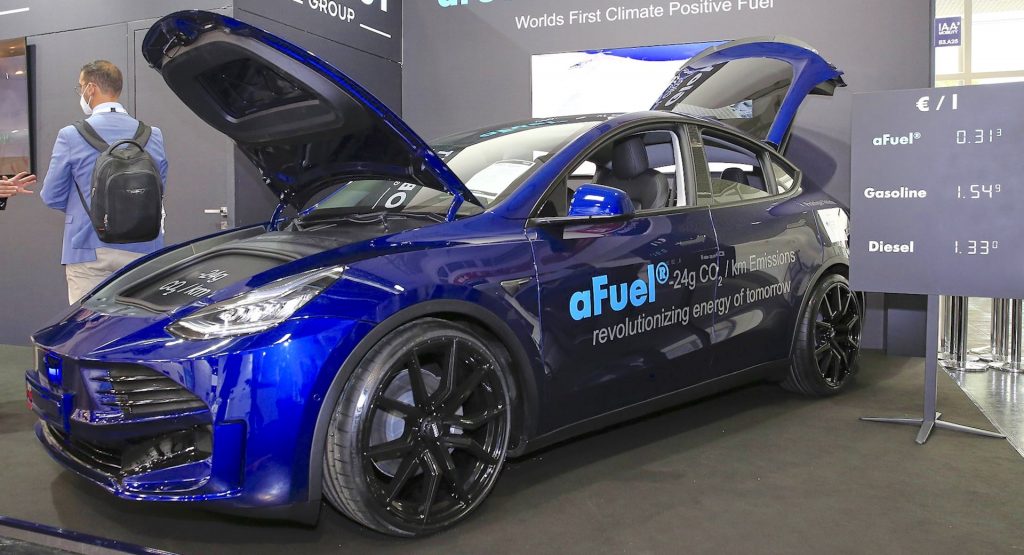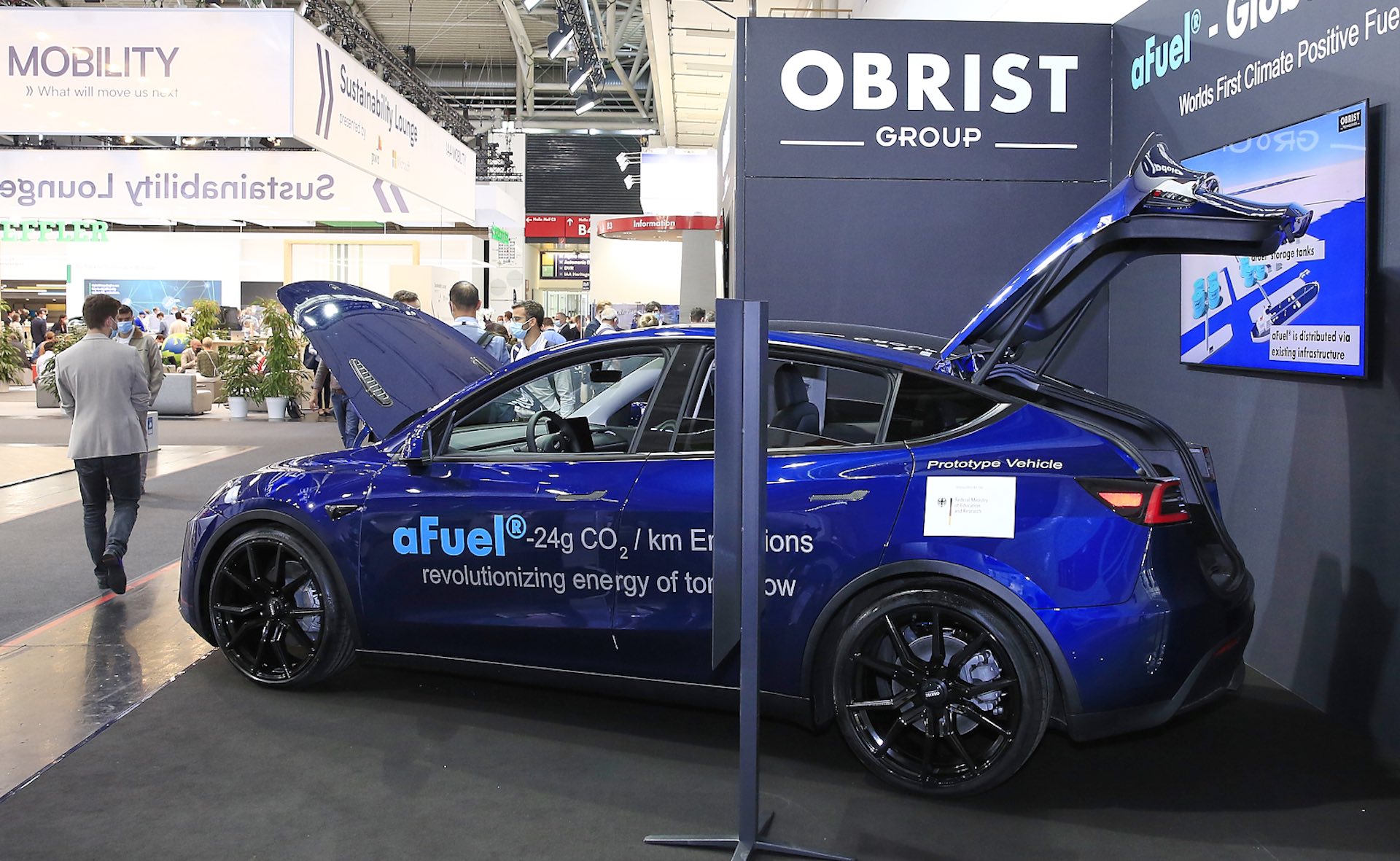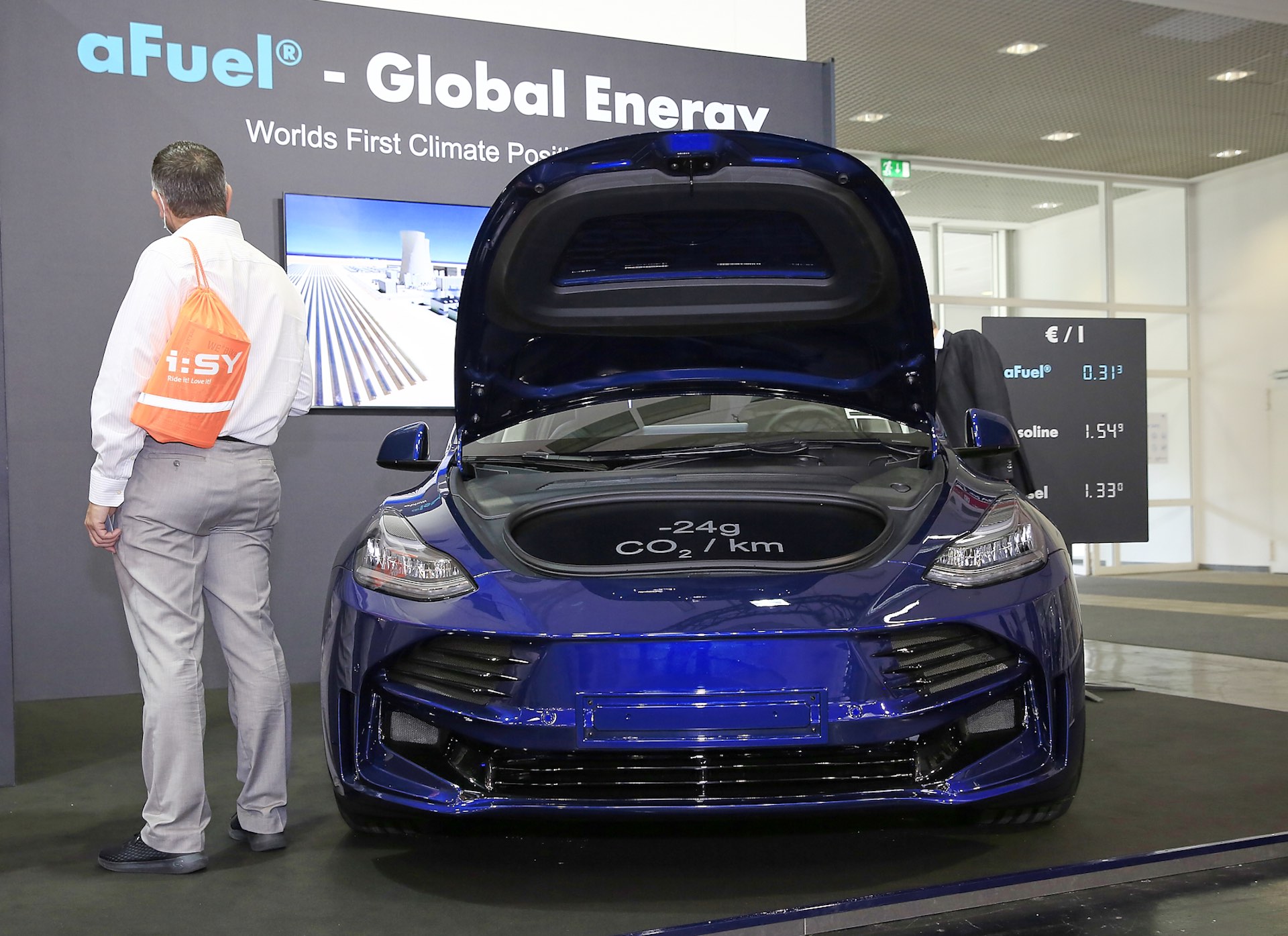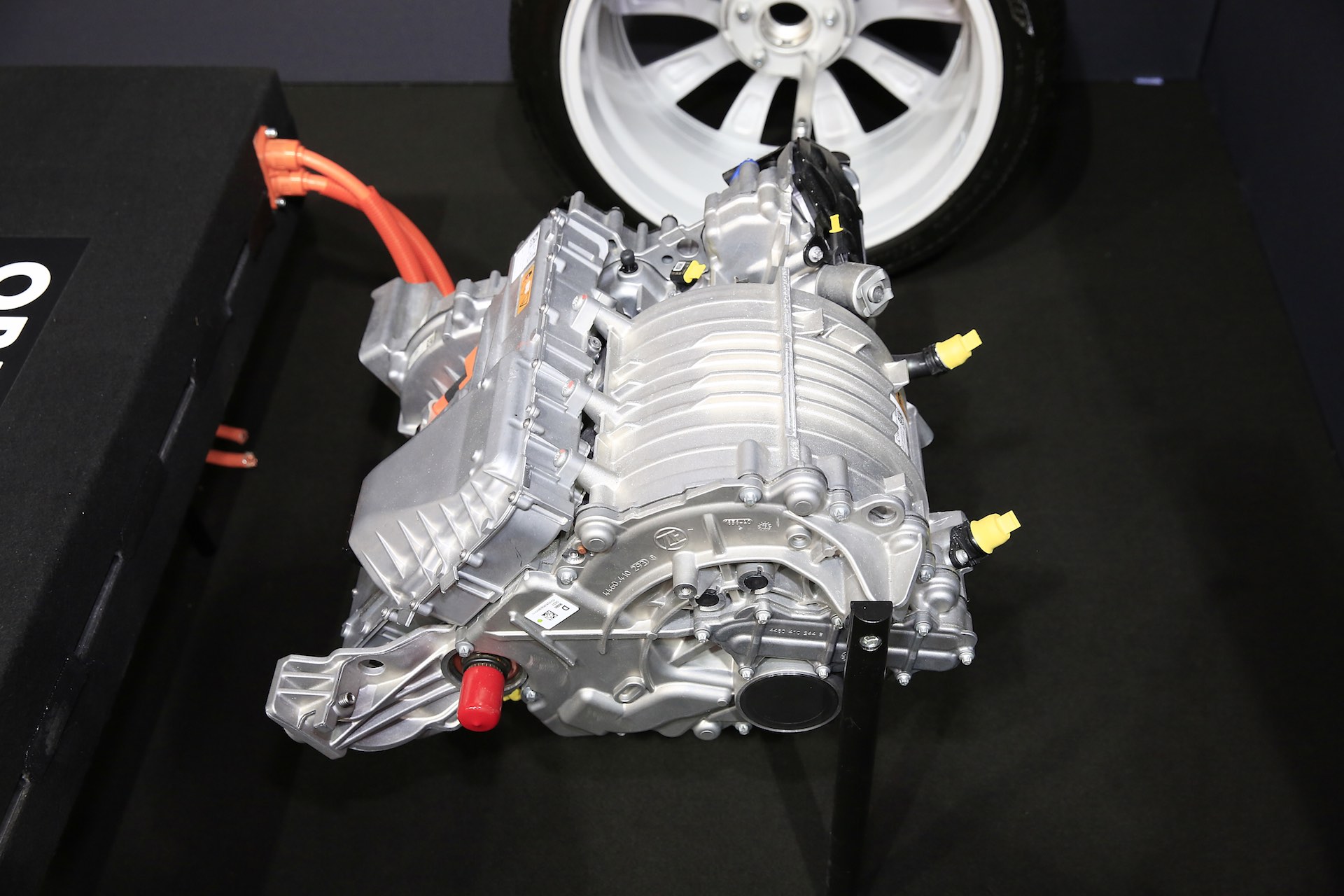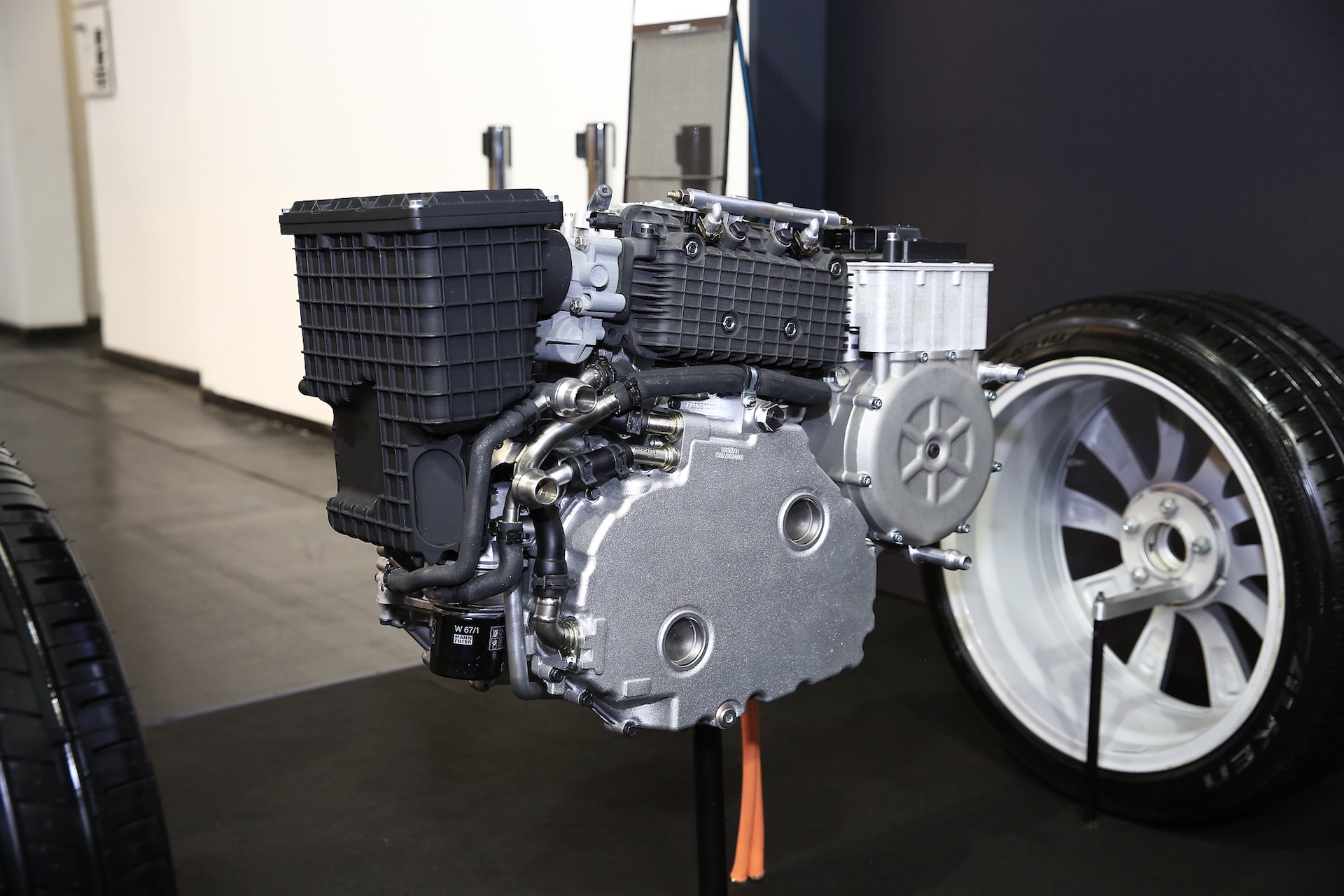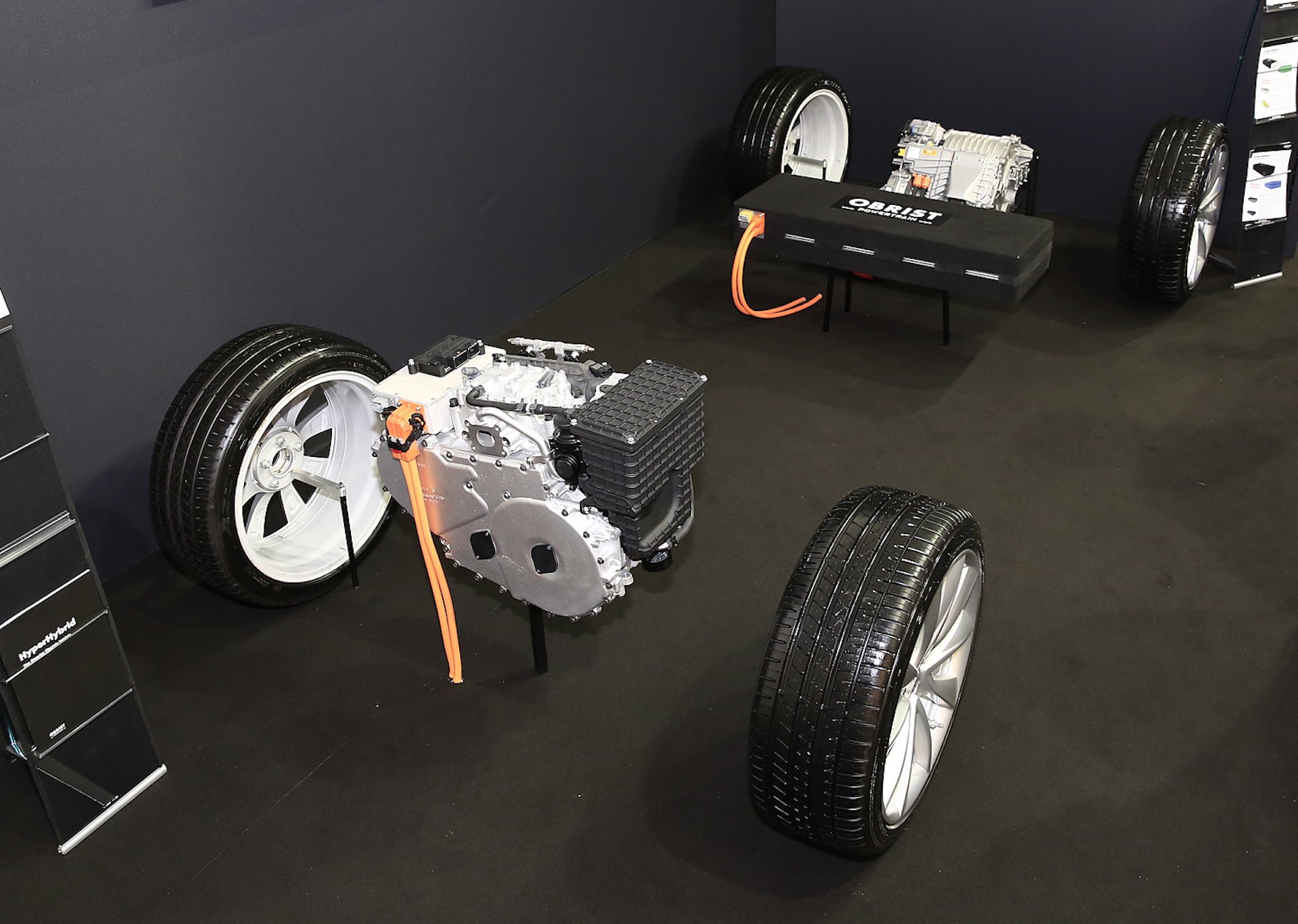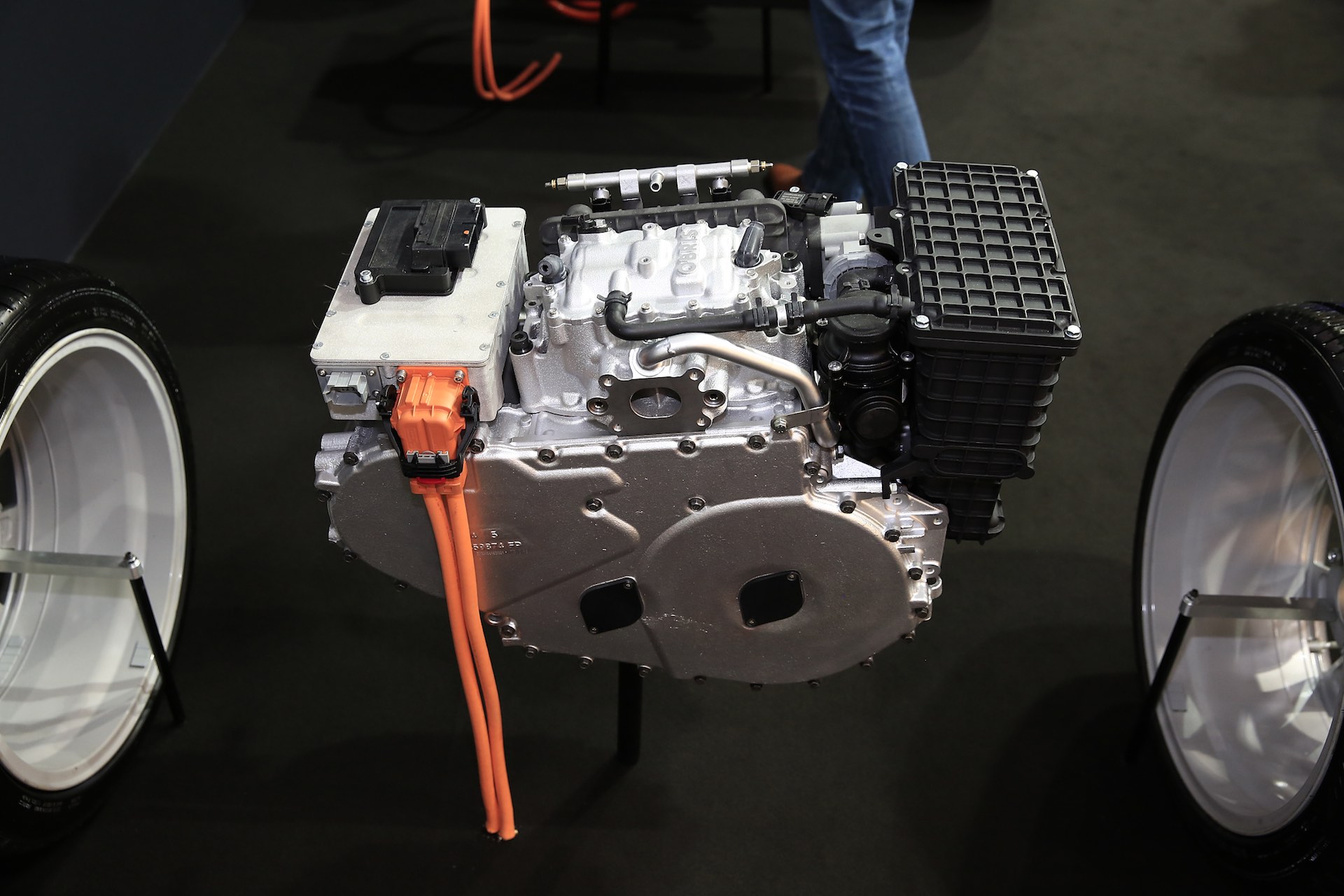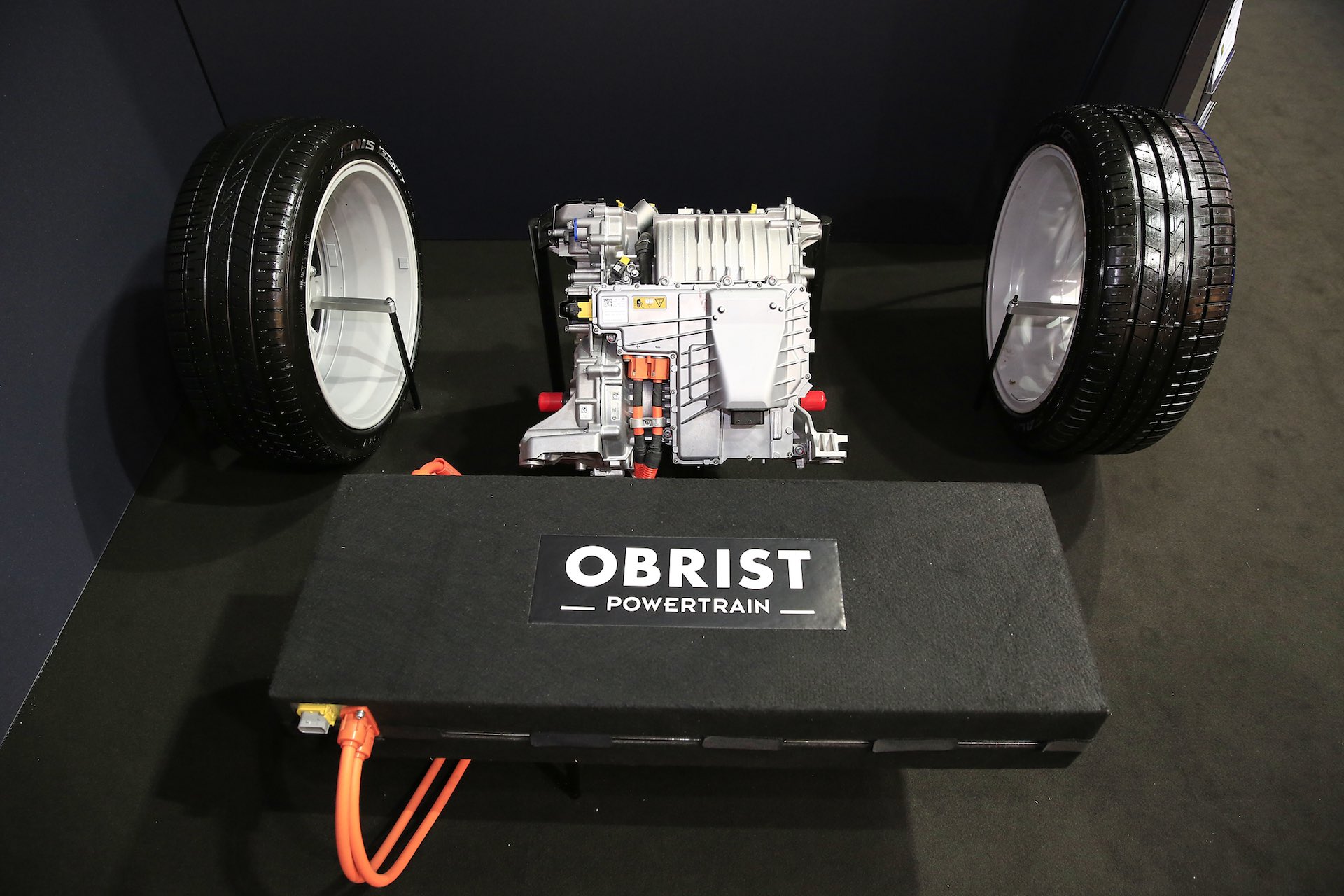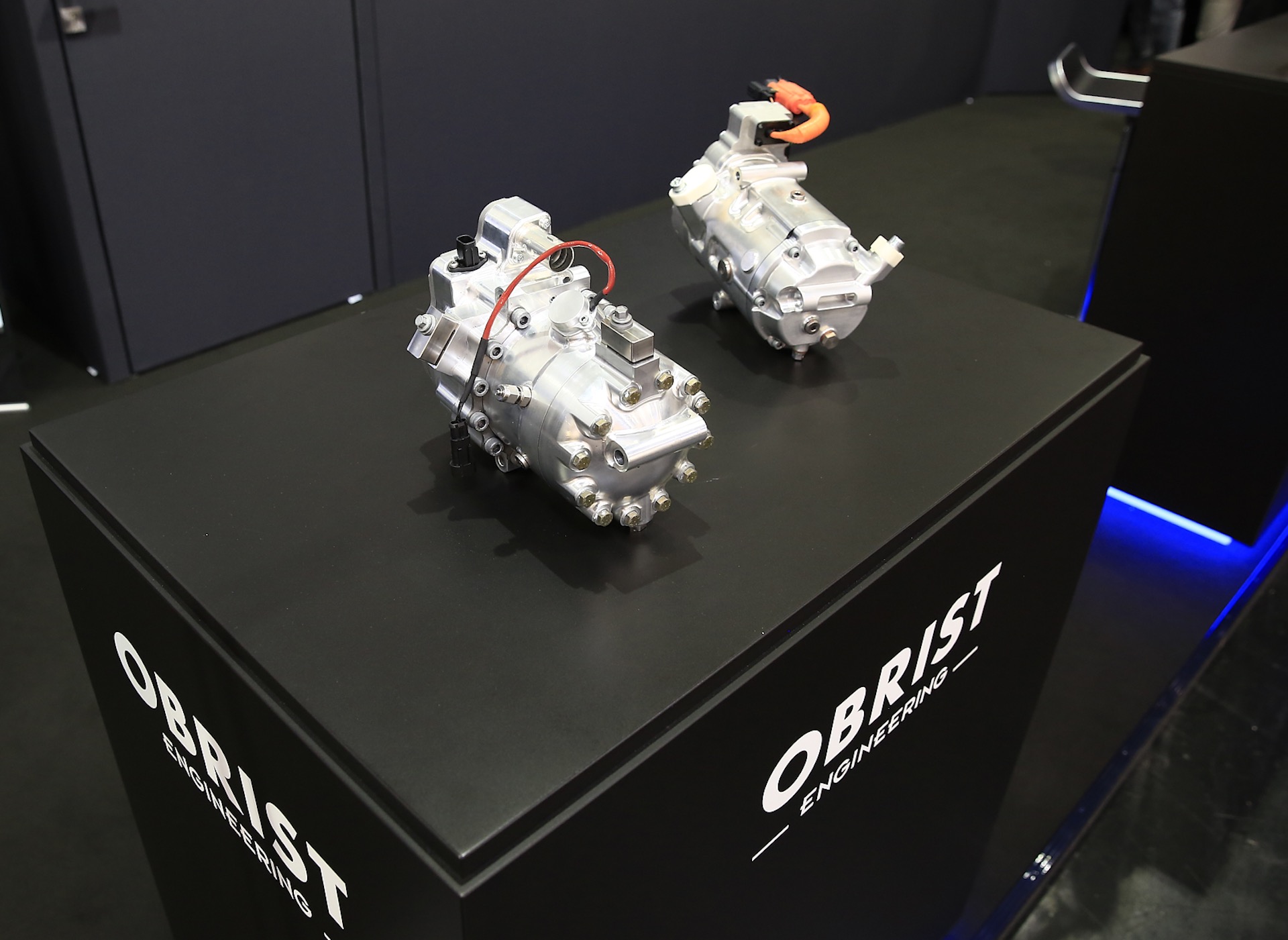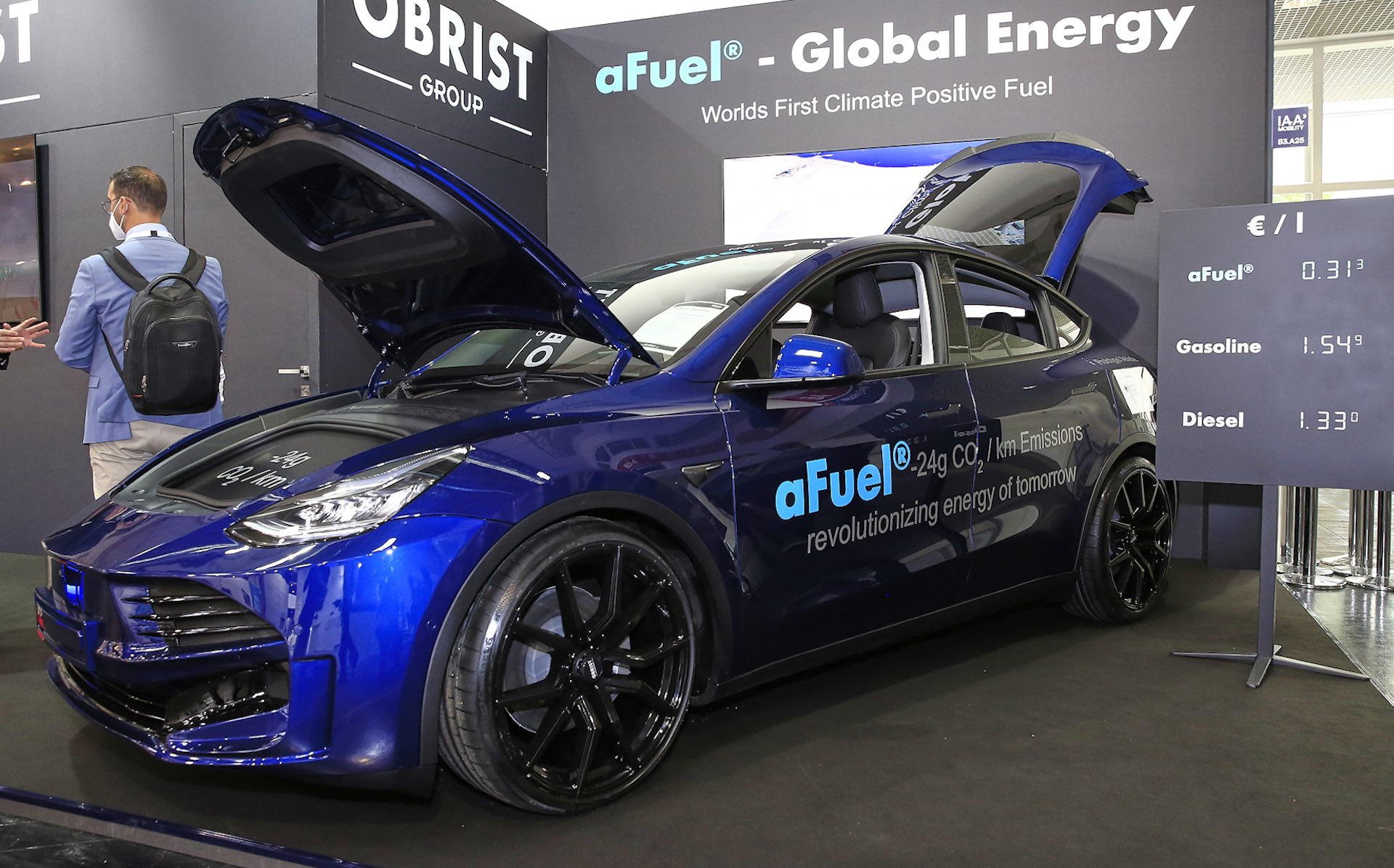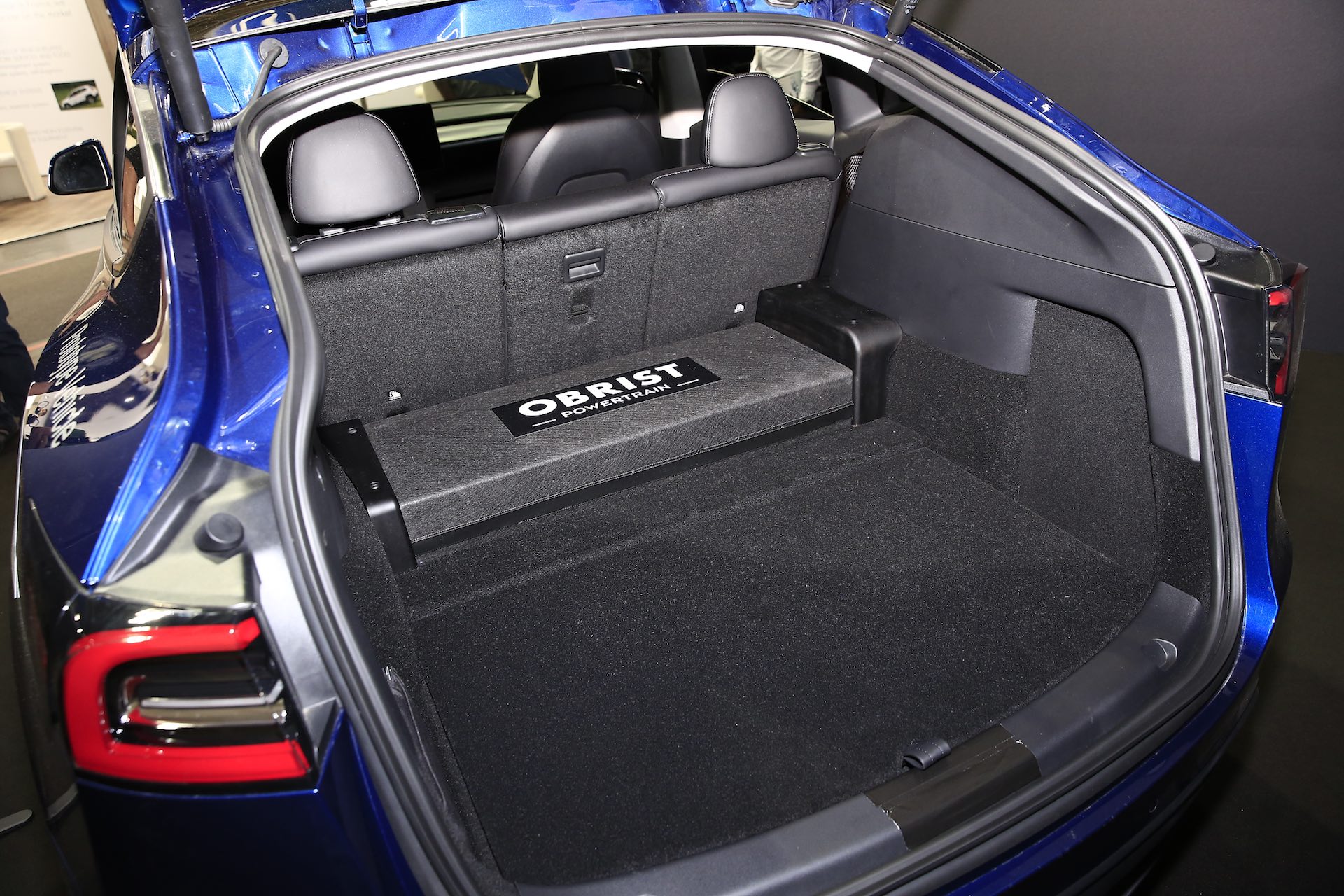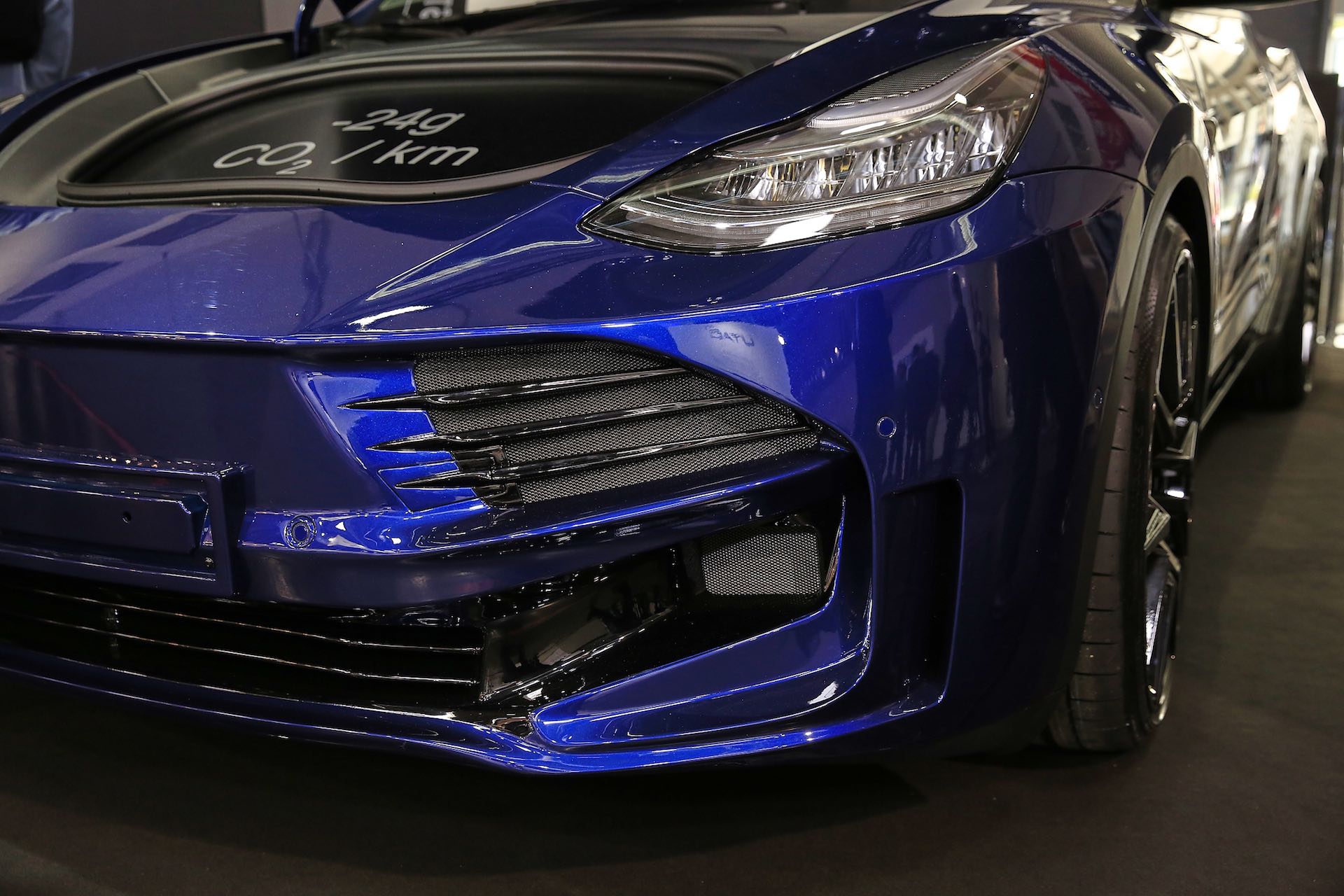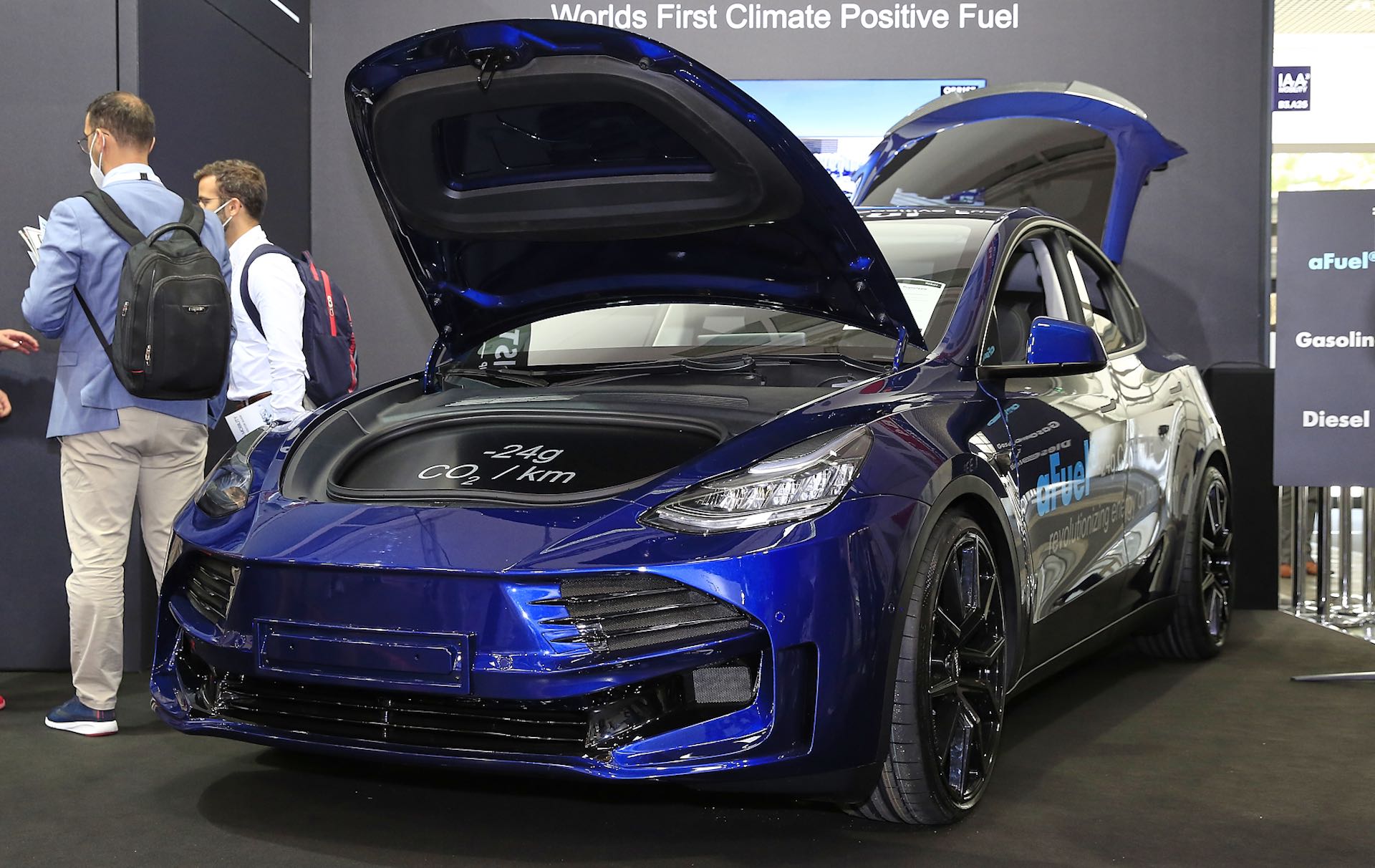While growing a country’s charging infrastructure and shrinking charging times with newer technology will help cautious would-be EV buyers make the switch to electric cars, the most obvious way to ease range anxiety worries is to fit bigger batteries.
But bigger batteries add weight and expense, often meaning EVs cost more and don’t handle as well as traditional ICE cars. Austrian powertrain specialist Obrist thinks its HyperHybrid range extender technology, seen here bizarrely installed in a Tesla Model Y at the Munich Motor Show, is a better solution.
Range extenders are small ICE powertrains that never drive a car’s wheels directly, but exist only to recharge a battery. The idea isn’t new. BMW offered a two-cylinder range extender option on its i3 city car, and Chevy’s original Volt (sold as the Vauxhall/Opel Ampera in Europe) had a 1.4-liter four-cylinder engine working as a generator.
Both were fairly unrefined, and although the prospect of a sweet rotary rage extender in Mazda’s MX-30 sounded like a better option (and a fix for the un-extended electric MX’s abysmal range), Mazda seems to have gone quiet on the idea.
Related: U.S. Senate Passes $1.2 Trillion Infrastructure Bill With Billions For EV Infrastructure
But Obrist has developed a hybrid drivetrain that it claims runs far more smoothly than previous range extenders and means carmakers can get away with using much smaller batteries. It’s currently in talk with carmakers over licensing the technology, the appeal for the OEMs being that it would cost just €2000 ($2400) for the hardware, compared with up to €12,000 ($14,000) for the average EV system.
Read: 2021 Munich Motor Show A-Z Debut Roundup
Obrist has developed a couple of different range extenders offering between 134 and 268 hp, but the one fitted to the Tesla consists of a two-cylinder, 1.0-liter gasoline engine and a small electric motor, plus a much smaller battery than originally fitted to the Model Y. It’s claimed to deliver fuel consumption of just 2.0 lt/100km (118 US mpg/141 mpg Imperial).
The most interesting feature is the ICE unit’s twin counter-rotating crankshafts which cancel out the kind of vibrations that made the BMW i3 feels so unrefined. Obrist goes so far as to claim that the engine has better NVH characteristics than a V12. Check out the video of it running with the coin place on top.
The concept is all about making economical cars more affordable, but the elephant in the room is, of course, the ‘dirty’ ICE engine. Obrist, though, claims the engine only ever runs at its optimum range, so is much cleaner than a conventional ICE motor. And looking further ahead, synthetic fuels could bring the CO2 output down to zero.
Do you think OEMs should adopt this kind of hybrid technology, or are full EVs still the best way forward, even if they are more expensive?




